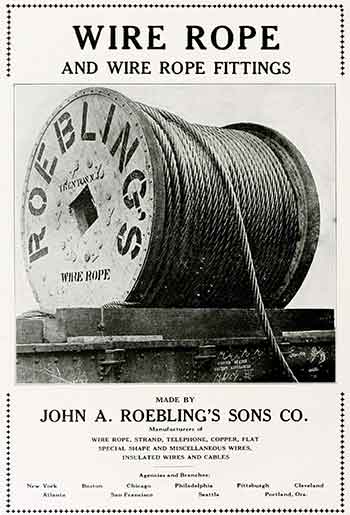

John A. Roebling: A Visionary Engineer

History is adorned with the names of individuals who have left an indelible mark on society through their innovative ideas and groundbreaking contributions. Among these is John Augustus Roebling standing as a towering figure in the field of civil engineering. His remarkable life journey, marked by relentless determination, ingenuity, and unwavering commitment to his ideals, not only transformed the landscape of engineering but also left an enduring legacy that continues to shape modern infrastructure.
Early Life and Influences
Born on June 12, 1806, in Mühlhausen, Prussia (now Germany), John Augustus Roebling was destined to become a pioneer in engineering. From a young age, Roebling exhibited a natural curiosity and aptitude for mechanics and mathematics. His early education included the study of architecture, engineering, and surveying at the Royal Polytechnic Institute in Berlin. These formative years laid the foundation for his future pursuits and instilled in him a profound understanding of the principles that would govern his groundbreaking work.
Roebling's decision to immigrate to the United States in 1831 was a turning point in his life. Settling in western Pennsylvania, he found himself surrounded by a burgeoning industrial landscape that would provide ample opportunities for his talents to flourish. His exposure to the American way of life and the spirit of innovation prevalent in the young nation undoubtedly influenced his perspective and further fueled his aspirations.
Innovations in Wire Rope and Suspension Bridges
One of Roebling's most significant contributions to engineering came in the realm of wire rope manufacturing. Recognizing the limitations of existing materials for bridge cables, he set out to develop an improved wire rope that would be stronger, more flexible, and longer lasting. Through meticulous experimentation and innovation, he succeeded in producing a wire rope composed of multiple smaller wires twisted together, a design that significantly increased the cable's tensile strength.
This breakthrough laid the groundwork for his pioneering work in suspension bridges. Roebling's innovative use of wire ropes paved the way for the construction of larger and more stable bridges that could span greater distances. His first major success was the construction of the Allegheny Aqueduct, a feat of engineering that carried the Pennsylvania Canal over the Allegheny River. This project not only showcased his expertise but also demonstrated the feasibility and advantages of using suspension bridges in practical applications.
The Brooklyn Bridge: A Monumental Achievement
While Roebling's contributions to wire rope and suspension bridges were already groundbreaking, his most enduring legacy is undoubtedly the design and construction of the Brooklyn Bridge. Conceived as a visionary project that would connect the bustling cities of New York and Brooklyn, the Brooklyn Bridge was an audacious undertaking that posed numerous challenges.
Tragedy struck in 1869 when Roebling suffered a severe injury on-site, leading to the amputation of his toes due to tetanus. Despite his incapacitation, his determination and dedication remained unshaken. He continued to oversee the project from his sickbed, using binoculars to observe the construction and communicate his instructions to his son, Washington Roebling, who had assumed the role of chief engineer.
The Brooklyn Bridge's construction was marked by innovation at every step. From the caissons that allowed workers to excavate the riverbed to the introduction of pneumatic technology for underwater construction, Roebling's ingenuity, and willingness to embrace new methods propelled the project forward. The bridge's distinctive Gothic-inspired towers and the utilization of steel cable support systems were testaments to his visionary engineering principles.
Legacy and Impact
Tragically, John A. Roebling passed away on July 22, 1869, due to complications from his injuries. However, his legacy lived on through the completion of the Brooklyn Bridge, a testament to his innovative spirit and unwavering determination. The bridge, completed in 1883, not only revolutionized urban transportation but also transformed the skylines of both New York City and Brooklyn.
Furthermore, Roebling's contributions reverberated beyond the Brooklyn Bridge. His innovations in wire rope and suspension bridge technology laid the foundation for modern civil engineering practices. His wire rope design found applications in various industries, including mining, elevators, and even the emerging field of aeronautics. The principles he established influenced subsequent generations of engineers, and his approach to problem-solving and innovation continues to inspire aspiring engineers worldwide.
1919 Advertisement
